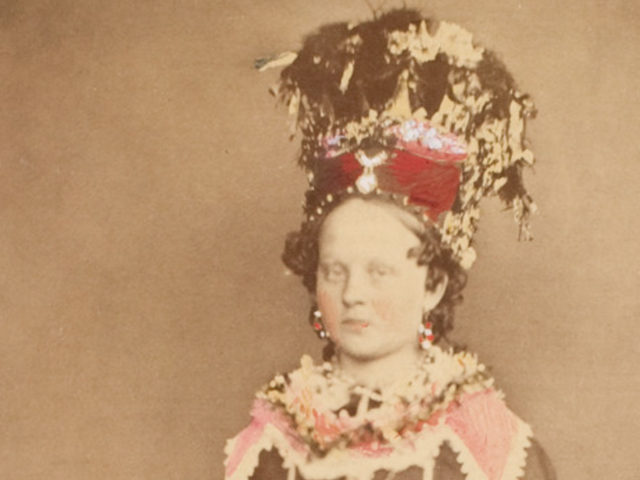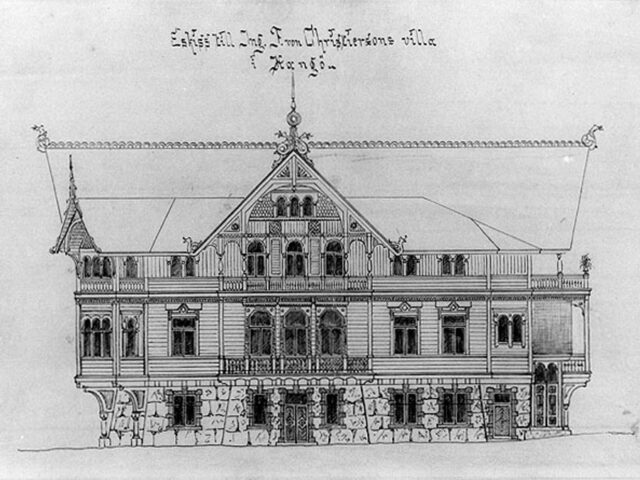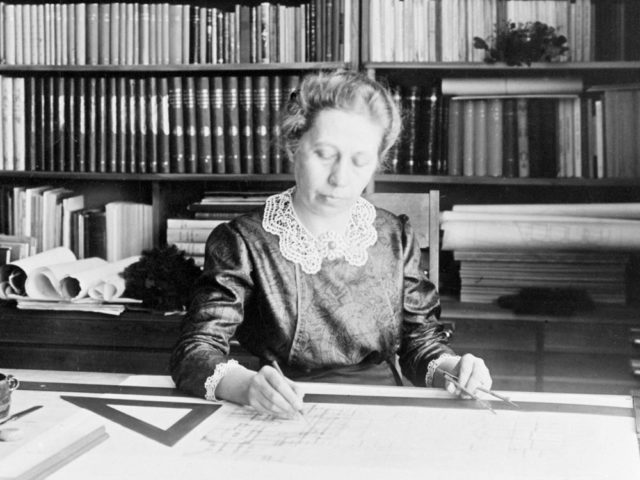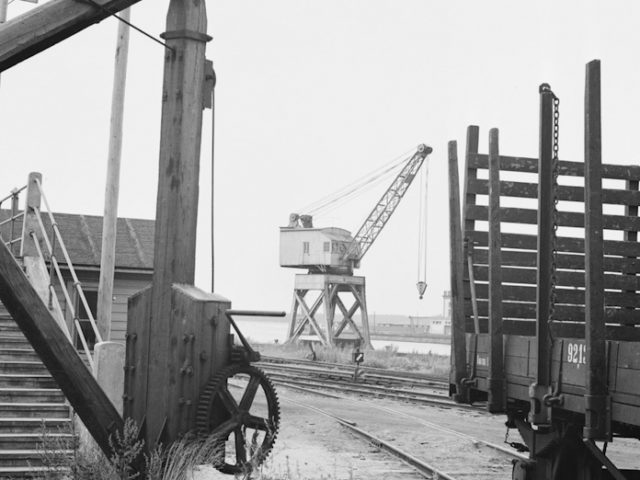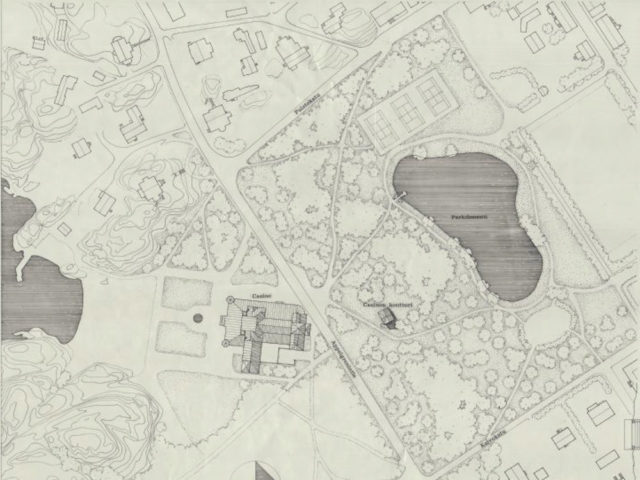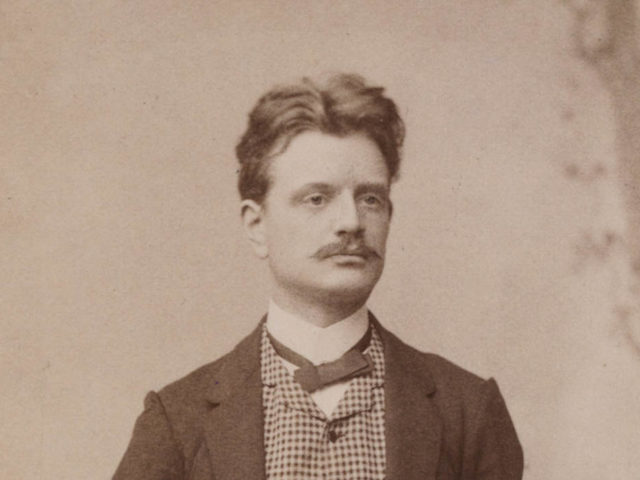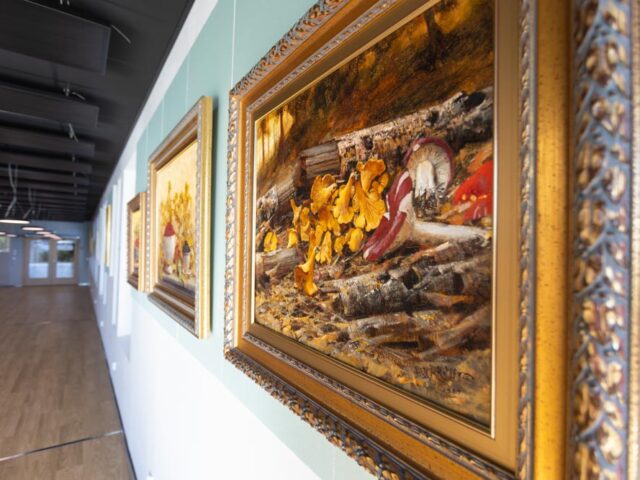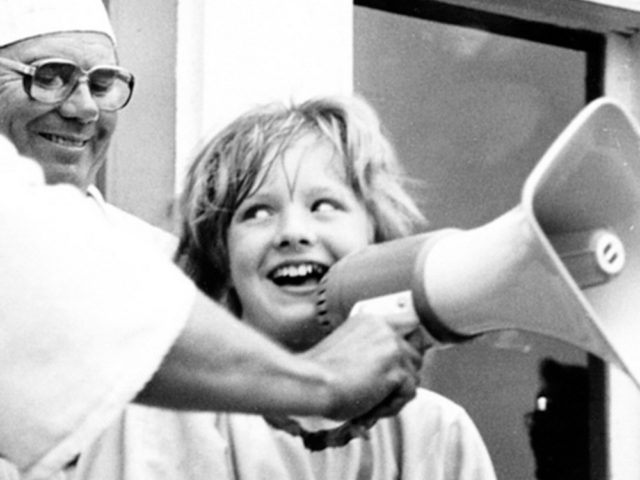Stories from history to the present day
Here you will find interesting and entertaining stories from different parts of Finland. Discover the gold diggers of Lemmenjoki, Oulu at the end of the 18th century, the art collection of the Vaasa hospital or the spa life of Hanko in the past
You can search for stories by keywords, map or themes. The contents have been brought to life with pictures, audio narration and videos.
Have a good journey with the stories!
RECOMMENDATIONS
The ghost at the tomb of the story has been considered partly autobiographical: like Sara Wacklin, a poor girl who has lost her father collects crumbs of information from here and there, “like a blind chicken,” and manages to feed her mother and teacher with earnings. The story is from Sara Wacklin's book? Hundrade minnen från Österbotten? from 1844.
View more
The series of ceramic sculptures “Valoa pinnan alla” (Light beneath the surface) by Paula Blåfield, located in the H Building of the Vaasa Central Hospital depicts the rich underwater world of the flads and gloes of the Northern Quark. A variety of underwater growth glimmers as the sun sheds light on them through the water.
View more
Thalatta! Thalatta! Greek warriors shouted for joy this word for the sea 400 years before the end of time. The poorly run military expedition turned into a relief when they saw the homely shores of the Black Sea. A couple of thousand years later, even in Hanko you can shout for joy Thalatta! Then you will say hello to a wonderful wooden villa on the southern slope of Vartiovuori right by the sea.
View more
The so-called Percent for Art Principle was applied in procuring art for the H Building of the Vaasa Central Hospital in order to bring joy to both the hospital’s customers as well as the people who work there. The art found in the H building comprises both works commissioned for the hospital and deposited works. In addition, photographs from the various municipalities of the wellbeing services county can be found printed on different surfaces.
View more
The Sea of Memories is a cultural project of the John Nurminen Foundation on Finnish memories related to the sea. The aim of the Sea of Memories project is to open up perspectives on people's images and beliefs about the sea and to activate Finns to think about their relationship with the Baltic Sea.
View more
In Lapland, Inari and Sodankylä, Finland, the only topsoil Gold Fields in Finland have been economically viable for gold panning. There have been several gold miners in the Lemmenjoki area. Some of them were professionals using machines but for many gold mining was a way of life. Gold digger Jaakko Kangasniemi surveys the Lemmenjoki gold rush in an interview with journalist Seppo J. Partanen.
View more
THE STORIES
The ghost at the tomb of the story has been considered partly autobiographical: like Sara Wacklin, a poor girl who has lost her father collects crumbs of information from here and there, “like a blind chicken,” and manages to feed her mother and teacher with earnings. The story is from Sara Wacklin's book? Hundrade minnen från Österbotten? from 1844.
View more
Wivi Lönn (1872? 1966) was a prolific architect, whose buildings include e.g. From Helsinki, Tampere and Jyväskylä. She ran her own architectural firm, the first woman in Finland, and designed e.g. several school buildings. For example, he designed the wooden part of Edvin Laine's school in Iisalmi in the early 20th century.
View more
Billnäs is part of the historic ironworks area of southwestern Finland and is the third oldest in Finland, Rautaruukki. Billnäs Ruukki was founded in 1641 by Carl Billsten with the permission of the Swedish krona. The historic Kuninkaantie runs through Ruukki's Mustionjoki River and the other bank of the river. In the heart of the ironworks area, industrial activity largely ceased in the 1980s. Today, the area is owned by Billnäsin Ruukki Oy. The company is developing the area into a center for tourism, events and teleworking, respecting history.
View more
The sculpture “Exuvia” by sculptors Pekka and Teija Isorättyä is located in the H Building of the Vaasa Central Hospital and depicts a common blue damselfly found in gulfs of seas and lakes. The Isorättyä couple got the idea for the sculpture on a hot summer morning while sailing on waters of the Northern Quark. A large group of turquoise common blue damselflies flew around their boat, like dancing pixies.
View more
Frans Mikael Franzén (February 9, 1772 Oulu? August 14, 1847 near Härnösand, Sweden) was a Finnish poet, clergyman, bishop of Härnösand, professor and academician.
View more
Hanko City Hall was completed in September 1926. The building was designed by Armas Lindgren and Bertel Liljequist. Activities in the town hall were lively. There were concerts, plays, dance performances and lectures. Of course, there was also an entire city administration building. In 1941, a continuation war broke out, and Russian troops blew up the town hall as they retreated from the city in December. The current town hall was completed in 1951.
View more
The Hanko museum was founded as early as 1907, although the beginning was a bit rocky. Tammisaari had its own museum established in 1906, so Hanko had to have one as well. The beginning of the 20th century was a lively time in the museum field in Finland anyway. It was important to highlight Finland's distinctive features amidst the Russification attempts at the beginning of the century. The museum started its operations in Fohlin's hut on Korkeavuorenkatu.
View more
The oldest surviving crane in Hanko Harbor was commissioned in July 1911. Ransomes & Rapier Ltd in London delivered the parts and the engineering firm Zitting & co from Helsinki assembled it. The crane was renovated in 2020.
View more
A spa was established in Hanko in the late 1870s. The celebrities and royals of their time were cared for by sister-in-law. Here is the story of sister Edla Helin.
View more
The strongest appeals for clean water in Hanko? against communicable diseases? heard among the medical profession, the loudest being city doctors Wilhelm Snellman as early as 1889 and Sam Chydenius as early as 1897? 1917. The sewerage and water supply system gradually developed, and finally in 1910 the design of the Hanko water tower began. The same architect Waldemar Aspel, who had just drawn the extensions of the spa and casino, was invited to the task.
View more
Hanko parks are great places to walk all year round. The first actual parks appear in the town plan from 1900, when the Town Hall Park, Vartiovuorenpuisto, Spa Park, Railway Park and the current Haagapuisto existed or are planned.
View more
Where in Hanko or in Finland can you see the names of so many famous people as in Hauensuo? In the 16th and 17th centuries, sailors have left their mark on the cliffs of this natural harbor, waiting for better winds. More than 600 carvings can be found here, either as names or family coats of arms. Listen to Hauensuoli - the story of Hanko's guestbook. Hauensole became a natural harbor in the 15th century when…
View more
The series of works “Herbarium” by the photographer Sandra Kantanen, located in the H Building of the Vaasa Central Hospital presents familiar and exotic plants with microscopic precision. The plants are photographed with a scanner and the resulting images are processed to such a large size that even the smallest details can stand out. The almost unnatural precision of the images manages to uncover something about the structure of nature.
View more
Before telephones and satellites, messages were transmitted loosely and on many roads. If nothing was heard, what was thought or feared to be true was read. The story is from Sara Wacklin's book? Hundrade minnen från Österbotten? from 1844.
View more
The steamship Express has a legendary place in Finnish history. The Express was built at Oskarshamn Shipyard in Sweden in 1877, and the ship was ordered by the Finnish company Finska Transito Ångbåts. It was 42.4 m long, 6.9 m wide and 3.5 m deep, with a top speed of 10.7 knots on a 400-horsepower engine. In open water, the journey from Hanko to Stockholm took 17 hours.
View more
Sibelius went both sailing and to the spa in Hanko, but in the summer of 1902 he spent more than a month here in Tvärminne. The only wife was pregnant and depressed. Jean wanted to get to a quieter place. He lived in Södergård, where Sakari Topelius, Hjalmar Munsterhjelm and Juhani Aho had previously spent summers.
View more
In the beginning there was curiosity, knowledge was gained by experimentation, and the sciences sprouted from the grains of knowledge. In the following story, science and superstition take on each other. The story is from Sara Wacklin's book? Hundrade minnen från Österbotten? from 1844.
View more
The landscapes of Kaukolanharju have inspired both local and visiting artists. The landscape has been immortalized by, for example, Magnus von Wright, Robert Wilhelm Ekman and, most famously, Albert Edelfelt.
View more
In 1924, the Finnish Tourist Association urged Finns to build observation towers in scenic areas. The influential people in Southwest Häme started to do everything. The opening of Tammela's Kaukolanharju lookout tower was celebrated in July 1926. In the festive speeches, it was hoped that the lookout tower would develop our sense of beauty as well as refine our inner man, and teach us to respect God, love our neighbors and our home region, and the whole country. The landscape from the observation tower inspired at least the artist Albert Edefelt, who painted one of the most famous Finnish landscape paintings ?Kaukolanharju at sunset?.
View more
In Lapland, Inari and Sodankylä, Finland, the only topsoil Gold Fields in Finland have been economically viable for gold panning. There have been several gold miners in the Lemmenjoki area. Some of them were professionals using machines but for many gold mining was a way of life. Gold digger Jaakko Kangasniemi surveys the Lemmenjoki gold rush in an interview with journalist Seppo J. Partanen.
View more
The series of works created for the H Building of the Vaasa Central Hospital by the visual artist Janna Syvänoja comprises the works “Laguuni” ( Lagoons), “Maa kohoaa” (The ground rises) and “Kaislikossa” (In the reeds) . Syvänoja collected the material for the works from beaches. For her, the material in itself constitutes an important point of departure for the content and visual expression of the work. The original materials, familiar to everyone, remain themselves in the work, reminding of their past.
View more
The animation “Landet andas” (The Ground breaths) by Geir Byrkjeland depicts our unique archipelago. The work is located in the H Building of the Vaasa Central Hospital. The Vaasa region is home to one of the few geological phenomena that can be experienced during a person’s lifetime. The phenomenon in question is land uplift, a remnant of the last ice age.
View more
Three nautical miles from the tip of the park cliffs to the east is Sandskär Island. On the quiet summer days of the mid-1920s, the voice of the famous singer Helge Lindberg was far from there. During the summer, he rehearsed 8 concert programs on his own island and gave another hundred concerts across Europe each year. The family's actual hometown was Vienna.
View more
Friendship is gold, but what happened in Oulu when the unbreakable trust and playfulness of the two teachers shook hands? The story is from Sara Wacklin's book? Hundrade minnen från Österbotten? from 1844.
View more
Four days before Germany conquered Tallinn on August 28, 1941, an Estonian lawyer and father of two small children, 36-year-old Leonid Tretjakevich (later Trett), boarded the Örne ship in Tallinn among 600 other Estonian men. There were no alternatives, for refusing to call the Red Army knew the death penalty. Leonid was stationed as an assistant to the artillery station on the West Bank of Hanko, in Varisniemi at Kappelisatama.
View more
Ljungbo Sanatorium was built by Viva Lagerborg, one of Finland's first gynecologists. The building was designed by his cousin Signe Lagerborg-Stenius. Anna Wichmann bought and saved the building in 2020. The villa is now in private use.
View more
The two-part artwork Lumpeet by the photographer Santeri Tuori is located in the building of the Turku Student Village Tyyssija. The work depicts water lilies and aquatic plants. The video-controlled LED light grid that lights up in the evenings brings new layers to the work.
View more
Carl Gustaf Emil Mannerheim (1867? 1951) was a Finnish military leader and statesman. Mannerheim became the national hero of the Finns at the beginning of our independence. In 1919, Mannerheim moved his church book to Hanko, and in the winter of 1920, he rented a villa on the Great Mäntysaari, which was named Stormhälla, Storm Rock.
View more
Created by the ceramicist Laura Pehkonen, the series of works “Merellä” (at sea) is a viewable and touchable abstract ceramic wall relief. Located on the walls of the 4th through to 6th floors of the H Building of the Vaasa Central Hospital, the work is a collage composed of several parts made out of unique, hand-made ceramic pieces.
View more
Definition of content? Relentlessness in the face of adversity, serenity in the face of suffering. The story of the remarkable descent is from Sara Wacklin's book? Hundrade minnen från Österbotten? from 1844.
View more
The Sea of Memories is a cultural project of the John Nurminen Foundation on Finnish memories related to the sea. The aim of the Sea of Memories project is to open up perspectives on people's images and beliefs about the sea and to activate Finns to think about their relationship with the Baltic Sea.
View more
The first music pavilion in Hanko Spa Park was built in 1890. It was like a large speaker with dance and operetta melodies.
View more
Tinsmith Einar Sandberg did many great jobs in Hanko. Among other things, he renewed the roofs of the church and powerhouse along with his sons after the war. He also made a large, 3-meter weather vane for the water tower that looks like a fish. Unfortunately, Einar suffered a cerebral hemorrhage while working on the roof of Lundell’s general store on the Esplanade. At that time he was already 80 years old and still involved in working life!
View more
All strata of the people took part in the old-time celebrations. The story is from Sara Wacklin's book? Hundrade minnen från Österbotten? from 1844.
View more
On the dark and rainy evening of October 1957, the motor ship Asa Finn, which was sailing in coal cargo, got lost on the fairway west of Hanko and crashed into the rocks. The mainings of the passing ships rocked the ship and Asa Finn began to fill with water. Captain August Route drove the ship to the nearest shoal where it sank between Lilla and Södra Klippingen. Asa Finn was just one of the names of the ship. During the Prohibition Act, the ship chartered relief for the thirsty from the southern neighbor and it was known by the nickname Pirtu-Veera. The ship was built in 1918 in Norköping, Sweden and was baptized in Wera.
View more
Created by the sculptor Kim Jotuni, “Puu” (tree) located in the H Building of the Vaasa Central Hospital is made of laminated pine board and painted pine squares set on a background of birch plywood. Jotuni wanted to make a wooden work for the hospital due to the material being an ecologically sound choice and also because the material goes hand in hand with the theme of the work.
View more
The Nazi-German transit camp was located in the Customs Name of Hanko. It was intended for 3,000 soldiers, but there were constantly 4,000, sometimes up to 5,000, soldiers. Hanko's advantage was a short sea voyage to the German-occupied Baltic ports of Tallinn and Liepaja and to Danzig, Poland. Hanko was also a good winter port, so troops could be transported all year round.
View more
Sara Elisabeth Wacklin (26 May 1790 Oulu? 28 January 1846 Stockholm) was an Oulu-born writer and pioneer in women's education. She was one of Finland's first female writers.
View more
Henrik Ramsay (1886? 1951) was a major economic figure and statesman but above all a passionate sailor.
View more
Are there more opposing professions than military and medical? What if a soldier starts advising a pharmacist on the treatment of his wounds? Self-help in Finnish. The story is from Sara Wacklin's book? Hundrade minnen från Österbotten? from 1844.
View more
The Orthodox Church of St. Nicholas of the Estuary is located in surrendered Karelia. It was the main church of the former Suistamo Orthodox parish. The church was inaugurated on May 17, 1844, and has been designed by Carl Ludvig Engel.
View more
The watershed is a submarine launched on 10.5. 1933 in Turku. Until 1936, the boat was only named CV 707. The Dutch engineering firm Ingenieurskantoor voor Scheepsbouw had ordered the vessel in October 1930 as a prototype commercial submarine. The Finnish state bought it in 1936, and it was named Vesikko.
View more
Hanko was the most important Departure City for migrants at the turn of the 19th and 20th centuries. About 250,000 Finns went through the port of Hanko in search of new life. Accommodation capacity in Hanko has always been a problem, and in the early 20th century, there were particularly many immigrants in Hanko who stayed here for a night or two before continuing their journey through England to the United States. The Finnish Steamship Company, which was responsible for the migrants' journey from Finland, decided to build a migrant hotel on the Boulevard in 1902.
View more
Life depends on the hair. How does a person act when a safety net fails? Where does he seek protection? What about explanations for surprising things? The story of the great thunderstorm in 1793. The story is from Sara Wacklin's book? Hundrade minnen från Österbotten? from 1844.
View more
In the early 2000s, Sanna Kannisto became known for her works depicting plants and animals in the rainforest. Since then, interest in bird photography has taken him to the Italian island of Ponza and to Russia’s Baikal. In immortalizing birds, Kannisto collaborates with scientists and ringers. In recent years, he has focused on filming in Hanko. Kannisto is a romantic hiker who picks up things of interest to him from the point of view of natural research, utilizing them in making pictures.
View more
Presentation of Pekka Lind's art collection | I have no artistic talent of my own. I could hardly even draw a stick figure. The greatest achievement of my artistic life has happened as a little boy in a well-known Finnish folk play, where I had to draw a "spider's picture" on Muttinen Aapel's wall board! That too required a lot of guidance from the older boys. To this day, I still don't know how I succeeded, because the audience just burst out laughing at the picture I drew with charcoal. It was definitely best for me to move from making art to the buyer side.
View more
Of all the means of crossing the river, the rarest is probably the winter bridge. The story is from Sara Wacklin's book? Hundrade minnen från Österbotten? from 1844.
View more
The series of works “Turkoosi virtaus” (turquoise flow) by Terhi Ekebom, on exhibit in the H Building of the Vaasa Central Hospital comprises eight sea-themed paintings. The series depicts water as a gentle and supportive element, a turquoise refuge of constant movement. The direction of the flow aligns with the direction the users of the hospital move through the space.
View more
The Tvärminne Zoological Station was founded by Johan Axel Palmén, Professor of Zoology, in 1902. His goal was to establish a marine field station in an area with a diverse environment and thus good opportunities for research. After his death, the position was transferred as a will to the University of Helsinki in 1919.
View more
Poppy Day is celebrated every year on July 27th. It has been celebrated in Hanko since the early days of spa culture, in the late 19th century. Here you can find more information about the history of Poppy Day in Hanko.
View more

